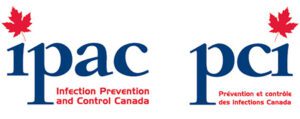Mold and Relative Humidity
What is the relationship between the growth of mold and my home’s Relative Humidity?
We’ve been asked by home owners on a number of occasions about what, if any, relation between when mold growth starts and relative humidity.
So, the first thing we should do is explain what relative humidity is and what is a healthy level in your home.
Relative Humidity, in simple terms, is the amount of water vapour in the air that is measured as a percentage at a certain temperature. The air in your home can hold more water the higher the temperature in your home.
When the Relative Humidity reaches the threshold value of 100 % excess moisture starts to condense and forms condensation water. The temperature at which condensation occurs is called the dewpoint. As the Relative Humidity is a function of the air temperature the dewpoint varies depending on the respective situation. For example, the dewpoint at a room temperature of 20 °C, with a relative humidity of 50 %, is 9.3 °C.
We know today that mold can already start to grow at a room humidity of 80 %. This means that in the given example, mold can start to grow at a surface temperature of 12.6 °C or less on walls, especially in corners and niches.
The perfect Relative Humidity is about 40% – 50% and this amount can change depending upon what season it is. In the winter an optimal Relative Humidity is 40% or lower. Lower because anything higher than that and you will start to see condensation on your windows. Not a good thing to see as this contributes to mold issues. بوكر
The chart above outlines the direct connection between the amount of Water Vapour in the air of your home at a certain temperature
Relationship between temperature, humidity and mold growth
The amount of moisture in one cubic metre of air varies as a function of the air temperature. Warm air can absorb more moisture than cold air. At a room temperature of 20° C and a relative humidity of 60 % one cubic metre of room air holds 10 g of water. If the room temperature is reduced to 8° C the air in the room can only absorb half the amount of moisture. This means that 50 % of the moisture escapes and precipitates as condensation water, mostly on the cooler outside walls. The risk of mould growth therefore increases at these points.
An even and stable Relative Humidity is essential for a sense of well-being in your home. The Relative Humidity in your home is affected by the following;
- Your regular daily activities
- How off you shower / take a bath
- The natural respiration of people, animals and plants. How many people / animals / plants you have in your home also affects levels
- The temperature / weather conditions outside of your home
- Whether or not you have a humidifier / de-humidifier operating in your home
- Foundation cracks or leaks.
- Roof leaks / wall gaps
- Proper wall / attic insulation / attic ventilation
Not only is it important for personal comfort, the correct Relative Humidity is essential for maintaining the building materials and structure of the home. What we mean is that by maintaining the proper temperature and Relative Humidity in your home you can effectively prevent the growth of mold on cold spots on your walls and in areas that are wet frequently, (showers in particular).
Not only is temperature and Relative Humidity important but so is ventilation. You must insure that proper ventilation behaviour is adhered to. Today’s homes have been built to be tight and to seal against drafts and low insulating values. While a good idea one of the drawbacks has been a lack of adequate ventilation.
As already mentioned humidity can be regulated by correct ventilation behaviour and kept at a pleasant level. Due to modern building standards and growing requirements for energy efficiency in new buildings, more and more importance is being attached to the topic of living area ventilation. As from 2009, for example, ventilation standards stipulate that a ventilation design must insures that a minimum air exchange rate in new buildings or homes takes place.
Mold Growth and it’s direct relation to Relative Humidity
As has been mentioned previously, mold requires for growth and proliferation certain essential physical and chemical conditions. These include satisfactory temperature, adequate moisture, sufficient oxygen, proper pH, and essential nutrients. Prevention of mold growth may be effected by restricting any of the above requirements. Mildew may be controlled also by physical agents that destroy the organism, such as ultraviolet radiation and heat sterilization, and by chemical poisons called fungicides. The specific conditions best determine the method to be employed to prevent mold growth. In certain applications the control of moisture through regulation of humidity has proved to be most satisfactory. This applies to the prevention of mildew in home closets, rooms, storage spaces and shipping units.
At the request of the British Public Record Office, a study was conducted that observed the conditions necessary for mildew to develop on materials used for book covers. Working with a particular species of mold called Penicillium chrysogenum, they noted that the minimum relative humidity for mold germination on glass was 81 per cent and for mildewing of leather and other book materials was 72.8 per cent.
Since it is obvious that mildew could not be present unless the mold spores could germinate, Groom and Panisset suggest that the spores germinate at a lower relative humidity on book materials because of the presence of nutrients. Galloway (1935) reported that the minimum relative humidity permitting growth of molds varies from 75 to 95 per cent for different species; thus protection of materials is assured only if the atmosphere is below 75 per cent R.H. (relative humidity). It was found that some fungus spores germinate at 0 per cent humidity on glass, but these fungi are associated with plant diseases and not mildewing of inanimate objects.
A report of the U. S. National Bureau of Standards states that at 8o per cent R.H., or less, no mildew growth on leather occurred, but that at 95 per cent R.H. there was heavy growth. Another study made an excellent study of the factors affecting the development of mold on various materials. They found no mold growth at 60 per cent R.H. and very little at 70 per cent R.H., but increasing amounts from 80 to 100 per cent R.H.
So to what extent does the moisture in the substrate determine mold growth as apart from the relative humidity of the atmosphere?
How are different materials affected under the same physical conditions of humidity and temperature? One study offered data to show that atmospheric moisture is more effective than moisture in the substrata for bringing about the germination of mold spores. For information on the second question, it was found, “If dry samples of pure wool and pure cotton are exposed to the same atmosphere the wool will take up approximately twice as much moisture as the cotton and, leaving out of account differences due to chemical composition, the two samples will be approximately equally liable to mildew.” The likelihood of a material to mildew at a certain humidity is determined not by the nature of the material but by the type of fungi present.
Our next blog will discuss very specific findings when looking at clarifying the relationship existing between humidity and the development of mold / mildew on certain materials.

Maple Leaf Mold Inc. is a certified mold / asbestos removal and biological disinfection / air analysis company located in Toronto that uses certified IICRC technicians for all testing and remediation projects.
We are a professionally licensed firm experienced in testing, verifying and removing Mold / Asbestos / Lead and other environmental contaminants as well as providing disinfection services to control and kill biological contaminants.
Call 416-254-7256 to talk with us about your issue anytime.



